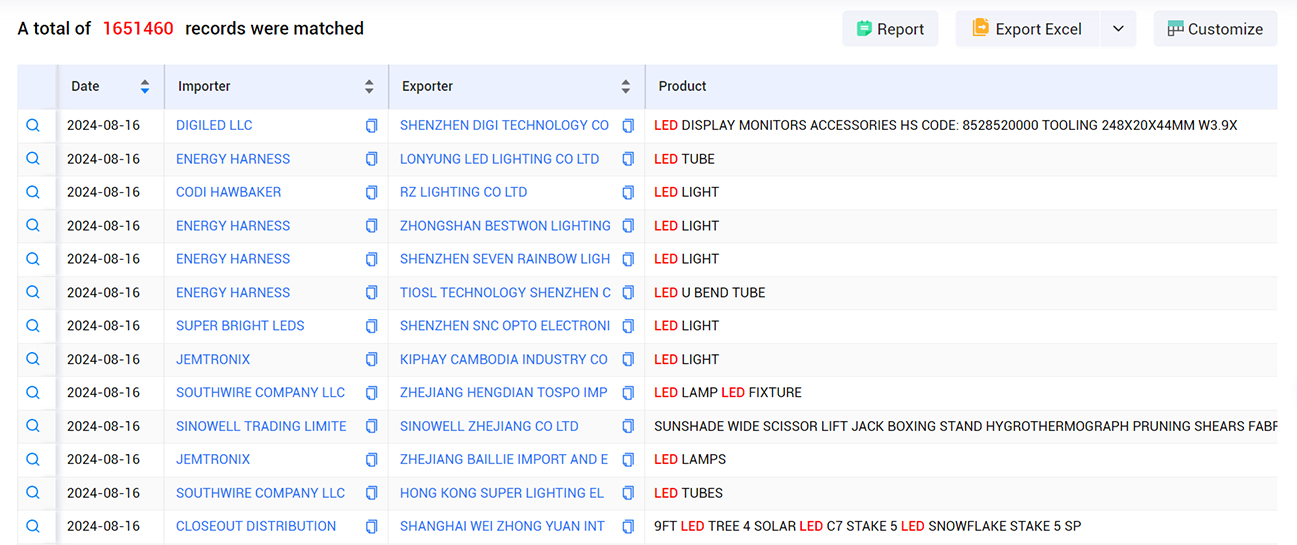 Cases
Cases
 2025-07-16
2025-07-16
Some people have the courage to break through barriers and transform the predetermined end of their journey into a new beginning.
Aimee from Jiangyin Hongyang Automotive Refrigeration Equipment Co., Ltd. is one such person. Starting as a foreign trade salesperson, she has risen to become a core partner in the company, with each step marked by significant personal growth and self-transcendence.
Here is her story:
1. Always Maintain Sharp Market Insight
I started as a foreign trade salesperson and, through hard work and determination, became a partner in the company. Along the way, I've experienced many ups and downs, but the key is to stay ambitious and determined to move upward.
Even in the early stages of your career, it's crucial to adopt a proactive mindset—anticipating needs and treating the problems of your clients and company as your own.
Whether you are a salesperson or a partner, accumulating rich experience and resources is essential. This involves not just mastering product knowledge, international trade regulations, logistics, and supply chain management, but also understanding the needs of your target market, the competitive landscape, and customer preferences. Only with this understanding can you stand firm in the competitive market.
In this process, I believe that maintaining market insight is critical.

Take our company as an example. In 2022, we achieved over 80 million RMB in sales, maintaining a good growth trend. However, in 2023, our performance declined to just over 70 million RMB. The root cause was our lack of market insight and over-reliance on a single market.
In recent years, those in foreign trade may have noticed that traditional markets like Europe and the United States have shown weak growth. So, in 2024, we quickly adjusted our strategy and identified Southeast Asia and the Middle East as new growth points for our products.

When conducting market analysis, our company often uses the Tendata iTrader SaaS Platform because it offers a variety of rich chart types, eliminating the need for complex data analysis and greatly reducing our analytical burden. We focus on the following key information:
- What is the total export and import volume of the product globally?
- What are the main markets? Where is it selling best?
- What is the export and import volume for a specific country?
- How does the current sales volume compare with the past two years? Is the product's sales volume increasing or declining?
- What is the rate of increase or decrease in export volume?
- In which countries is the export volume rising? In which is it declining?
- In which markets is product search volume increasing or decreasing?
By analyzing data from these dimensions, we can more accurately grasp market trends and make more informed business decisions.
2. Position Yourself as a Buyer, Not Just a Supplier
Many salespeople understand the importance of following up with clients but often turn it into harassment.
As a salesperson, you must learn to think from the buyer's perspective and, during follow-up, place yourself more in the buyer's shoes rather than staying solely in the supplier's mindset.
I often think: If I were the buyer, faced with an overwhelming number of emails every day, I wouldn't have time to read through all the unfamiliar ones. With many tasks already on my plate, I'd probably just delete those emails. Especially for larger clients with substantial purchasing volumes, they are often “flooded” with emails from numerous factories and suppliers, so our emails might end up in the spam folder or the trash bin.

Some salespeople might argue that they put extra effort into crafting their sales emails, creating catchy subject lines and enriching the content.
But does a unique subject line or rich content alone really make the customer open the email?
In my view, that's far from enough.
3. Combine Trade Data with Trade Shows for a 1+1>2 Effect
Our company doesn't rely solely on the Tendata iTrader SaaS Platform to send emails; instead, we cleverly combine the platform with trade show activities to achieve a 1+1>2 effect. For example, I recently attended a trade show in Indonesia. Before the show, I used the services provided by the Tendata iTrader SaaS Platform, with their customer service team helping me compile detailed information on all the buyers and trade records in Indonesia.

At the time, I wasn't familiar with the Indonesian market, didn't know who my target customers were, and wasn't aware of the major buyers there. Through this data, I learned about competitors and customers, market trends, and used their T-Discovery tool to check whether these markets were on an upward or downward trend, which provided valuable insights for my trade show visit.

More importantly, with this detailed buyer list, my strategy at the trade show became more proactive. Instead of passively waiting for potential customers to visit our booth, I could actively seek out and connect with large local clients who might have booths at the show.
Many large clients already have suppliers and are reluctant to change due to the hassle and risk involved.

What we need to do is first establish contact with the client, maintain good communication, understand the strengths and weaknesses of our competitors, and constantly remind them of our product advantages and service capabilities so that they remember us. Then, patiently wait for the “right” moment—when they truly need something, they will naturally think of us.
This strategy not only improved our efficiency at trade shows but also significantly increased our chances of discovering and connecting with potential target customers, leading to more precise and effective client development.
Category
Leave Message for Demo Request or Questions


 T-info
T-info T-discovery
T-discovery

 My
Tendata
My
Tendata Market Analysis
Market Analysis Customer
Development
Customer
Development Competitor
Monitoring
Competitor
Monitoring Customer Relationship
Customer Relationship





































































































































